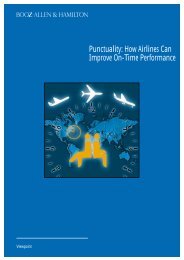The sentence
The sentence
The sentence
You also want an ePaper? Increase the reach of your titles
YUMPU automatically turns print PDFs into web optimized ePapers that Google loves.
Noun clause derived from questions<br />
Yes/No questions<br />
1. Has he signed that contract? is a direct Yes/No question.<br />
2. We can introduce a Yes/No question as a noun clause after if or whether. We use<br />
‘reporting verbs’ like ask, tell me, want to know:<br />
Tell me if he has signed the contract. (Tell me what?): if he has signed the contrast.<br />
Ask him whether he has signed it. (Ask him what?): whether he has signed it.<br />
Question-word questions<br />
1. When did you sign the contract? is a question-word question.<br />
2. We can introduce this as a noun clause after Tell me, I want to know, etc. <strong>The</strong> word order<br />
changes back to subject + verb and we don’t use a question mark:<br />
Tell me when you signed the contract. (Not *Tell me when did you sign*)<br />
F. <strong>The</strong> complex <strong>sentence</strong>: relative pronouns and clauses<br />
Relative pronouns and clauses<br />
Introduction to relative clauses<br />
Suppose you want to write a paragraph like this:<br />
<strong>The</strong> house we moved into is absolutely beautiful. <strong>The</strong> people who lived here before us took<br />
very great core of it. <strong>The</strong> garden, which is quite small, is lovely. I'm glad we moved. I don’t<br />
think we’ll ever regret the decision we made.<br />
If we want to speak or write like this, we have to master relative clauses. We introduce<br />
relative clauses with these relative pronouns: who, who (m), which, that and whose.<br />
‘Who’, ‘Which’ and ‘That’ as subjects of a relative clause<br />
1. We use who or that to refer to people. We use them in place of noun subjects or pronoun<br />
subjects (I, you, he, etc.) and we cannot omit them.<br />
<strong>The</strong>y do not change when they refer to masculine, feminine, singular or plural:<br />
He is the man/She is the woman who/that lives here. (Not *He is the man who he …*)<br />
<strong>The</strong>y are the men/the women who/that live here. (Not *<strong>The</strong>y are the men who they …*)<br />
2. We use which or that (in place of noun subjects and it) to refer to animals and things:<br />
That’s the cat which/that lives next door. Those are the cats which/that live next door.<br />
Here’s a photo which/that shows my car. Here are some photos which/that show my car.<br />
‘Who (m)’, ‘which’ and ‘that’ as objects of a relative clause<br />
1. We use who(m) or that to refer to people. We use them in place of noun objects or object<br />
pronouns (me, you, him, etc.). we often say who instead of whom when we speak.<br />
<strong>The</strong>y do not change when they refer to masculine, feminine, singular or plural:<br />
He’s the man/She’s the woman who(m)/that I met. (Not *He’s the man that I met him.*)<br />
<strong>The</strong>y’re the men/the women who/that live here. (Not *<strong>The</strong>y are the men who they …*)<br />
However, we usually omit who(m) and that. We say:<br />
He’s the man/She’s the woman I met. <strong>The</strong>y’re the men/<strong>The</strong>y’re the women I met.<br />
5




